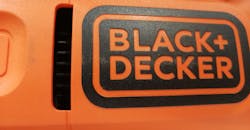Stanley Black & Decker Realizes AI Is a Powerful Tool
Editor's Note: Stanley Black & Decker and DeepHow will be speaking on the topic of Bridging the Skills Gap at the 2021 Manufacturing & Technology Show. The in-person event will be held Nov. 9-11 in Cleveland, Ohio.
Yes. The narrative has become engrained as a key concern for leadership today. The most experienced and knowledgeable workers are nearing retirement. And, as stats are showing the pandemic is actually speeding up retirement decisions. Unfortunately, as these skilled workers leave, knowledge leaves with them.
This has manufacturers like Stanley Black and Decker (SBD) searching for creative ways to instruct, train and update the next generation. The ultimate goal is to capture the expertise of outgoing workforce, gain an understanding of the tricks of their trade and know-how with hopes of transferring these invaluable skills to the next generation.
Not an easy task.
Of course, with the right approach, access to today's technology could definitely help. After all, as technology continues to rapidly evolve, people are learning in new ways, foregoing printed manuals and PDFs, turning to more engaging resources online. As such, video has become a preferred method for delivering rich training. How many people turn to YouTube for help with home repairs?
The idea that most people have access to high definition video cameras in their pockets is a big plus. However, few have the time or patience to master video-editing tools – which, at least within the manufacturing space, often discourages teams from creating training videos in-house.
As a result, leveraging video at scale across the manufacturing environment to upskill and continuously improve a workforce and operations has been far from ideal, Kevin Lemke, vice president of Stanley X Venture Studio tells IndustryWeek. Stanley X is the innovation hub of Stanley Black & Decker. “Creating videos has been costly and laborious. Using the video has not met the needs of allowing people to learn what they need when they need it,” he says.
AI enhanced approach
Yet, Lemke recognized the potential with video, and had no intention of giving up.
This is when Lemke started engaging with DeepHow. DeepHow has enabled SBD to create video with minimal production effort. “Whereas one minute of video used to take one hour of production, AI reduces this to one minute for every ten minutes of production time,” he says. “As for learning, users can now get right to the point in the video that addresses the need at the moment. Video is the preferred mode of learning, especially for the younger generations in the workforce. Now, with AI, it becomes eminently usable and scalable.”
According to Lemke, after piloting the process, SBD is now using DeepHow’s innovative AI platform to begin transforming the way manufacturing and maintenance personnel acquire and use their skills now and through their careers. “The most impressive benefit for manufacturers is that they capture and synthesize training information and get it into the hands of those who need it in the most efficient and digestible way possible today.”
Understanding DeepHow
DeepHow’s AI-based approach takes aim at the most time-consuming phases of video creation: editing and subtitling. DeepHow CEO Sam Zheng tells IndustryWeek, the idea is simple:
- An expert performs their individual tasks and processes,
- This workflow is captured using a mobile app and uploaded to the cloud.
- Using the latest AI technologies, this captured data is extracted and synthesized, turning complex workflows into professional step-by-step how-to videos.
“The AI platform seamlessly captures and organizes expert knowledge in order to deliver just-in-time information to team members in multiple languages, making knowledge digitalization highly efficient and scalable across the enterprise,” says Zheng.
Once a team has learned how to use DeepHow and deploy training videos, some interesting things happen, explains Zheng. “As teams use DeepHow to increase their output of video training, they can completely transition from manuals and other old-school methods. The trainers now can create the video training they need. And of this can easily be scaled up across the organization, upstream to suppliers, and downstream to partners and customers,” he says. “DeepHow’s AI (called Stephanie) analyzes usage, starts to understand the needs of this particular use case, and makes recommendations. For example, we know which videos each user watched so we can recommend a training trajectory (or a specific curriculum) from what others have watched for optimal skills development.”
Stage 1: Data capturing, building know-how repository/library, AI indexing and generating the “know-how map”
Stage 2: Focusing on learners’ needs, adaptive learning and customized learning
Stage 3: Optimized skills management — a data-driven approach to implement a strategic approach to drive continuous improvement.
Once a manufacturer builds its library, it has the ability to assign workers to new tasks based on understanding what they already know, added visibility into accrued and accumulated skills as well as the flexibility to benefit from resource allocation based on known skill sets. “For example, on a new product line knowing who to pick to start up this new line or location,” says Zheng.
About the Author
Peter Fretty
Technology Editor
As a highly experienced journalist, Peter Fretty regularly covers advances in manufacturing, information technology, and software. He has written thousands of feature articles, cover stories, and white papers for an assortment of trade journals, business publications, and consumer magazines.
